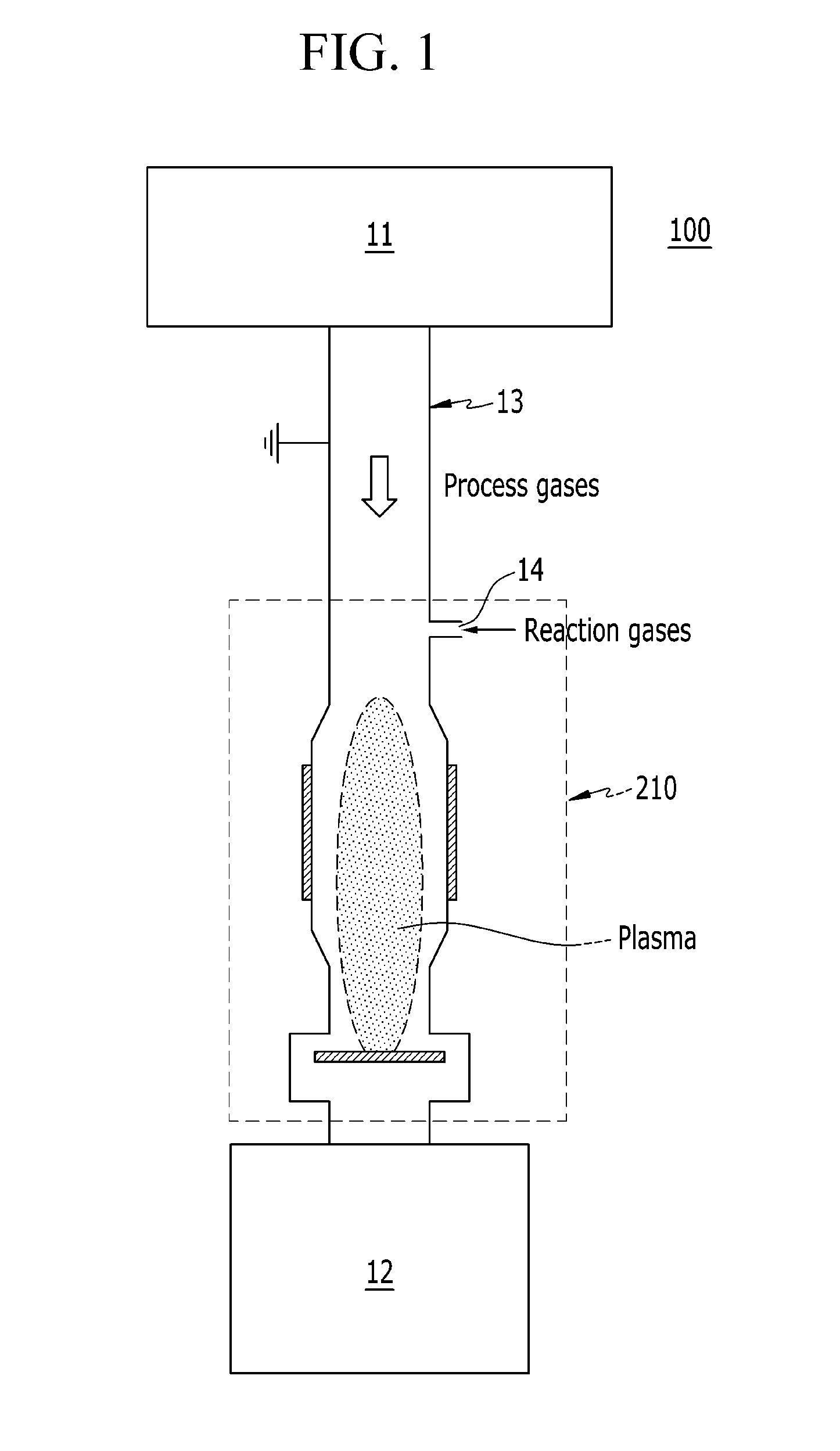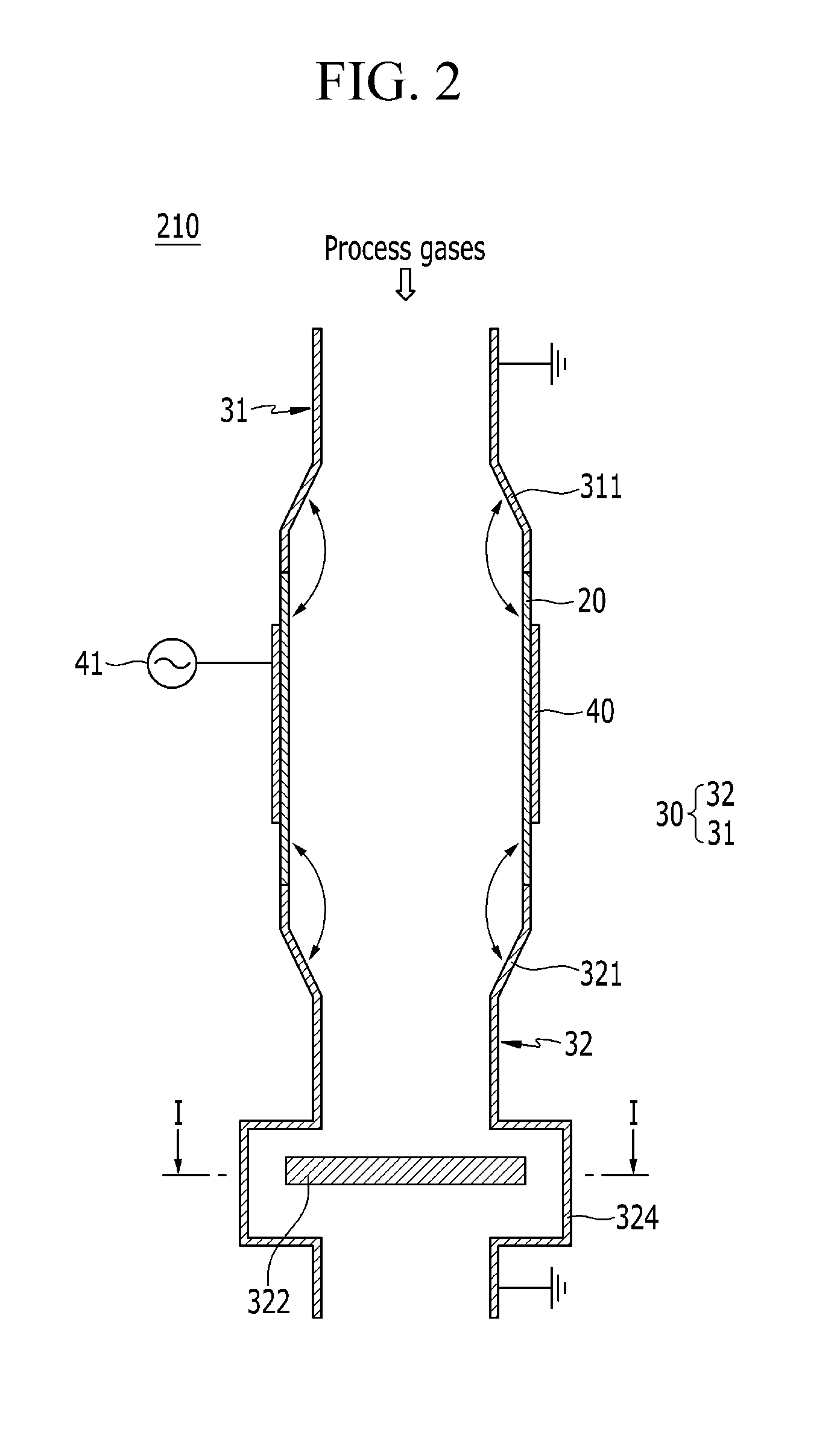Plasma reactor for abatement of hazardous material
a plasma reactor and hazardous material technology, applied in the field of plasma reactors, can solve the problems of reducing the decomposition rate of hazardous materials passing through the center area of the plasma reactor, deteriorating the durability of vacuum pumps, and undecomposed precursors accumulated between vacuum pumps and scrubbers, so as to reduce the dependence of hazardous materials, increase the decomposition rate of hazardous materials, and good decomposition performan
- Summary
- Abstract
- Description
- Claims
- Application Information
AI Technical Summary
Benefits of technology
Problems solved by technology
Method used
Image
Examples
Embodiment Construction
[0042]Hereinafter, the exemplary embodiments of the present invention will be described more fully with reference to the accompanying drawings so that those skilled in the art would easily utilize it. The present invention may be implemented in various forms, and the scope of the present invention is not limited to the embodiments described herein.
[0043]FIG. 1 is a schematic diagram of a process system including a plasma reactor according to the first exemplary embodiment of the present invention. The process system of FIG. 1 may be a low pressure process system for semiconductors, displays, solar cells, and so on.
[0044]Referring to FIG. 1, a process system 100 includes a process chamber 11 in which tasks such as etching, deposition, cleaning, etc. are processed, a vacuum pump 12 that is connected to the process chamber through a pipe 13 and releases process gases used in the process chamber 11, and a plasma reactor 210 that is installed between the process chamber 11 and the vacuum...
PUM
| Property | Measurement | Unit |
|---|---|---|
| pressure | aaaaa | aaaaa |
| pressure | aaaaa | aaaaa |
| diameter | aaaaa | aaaaa |
Abstract
Description
Claims
Application Information
 Login to View More
Login to View More - R&D
- Intellectual Property
- Life Sciences
- Materials
- Tech Scout
- Unparalleled Data Quality
- Higher Quality Content
- 60% Fewer Hallucinations
Browse by: Latest US Patents, China's latest patents, Technical Efficacy Thesaurus, Application Domain, Technology Topic, Popular Technical Reports.
© 2025 PatSnap. All rights reserved.Legal|Privacy policy|Modern Slavery Act Transparency Statement|Sitemap|About US| Contact US: help@patsnap.com



